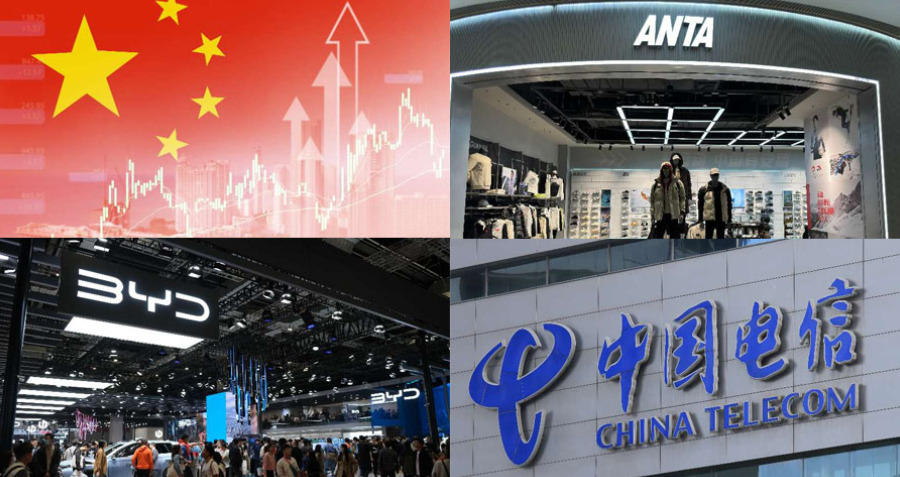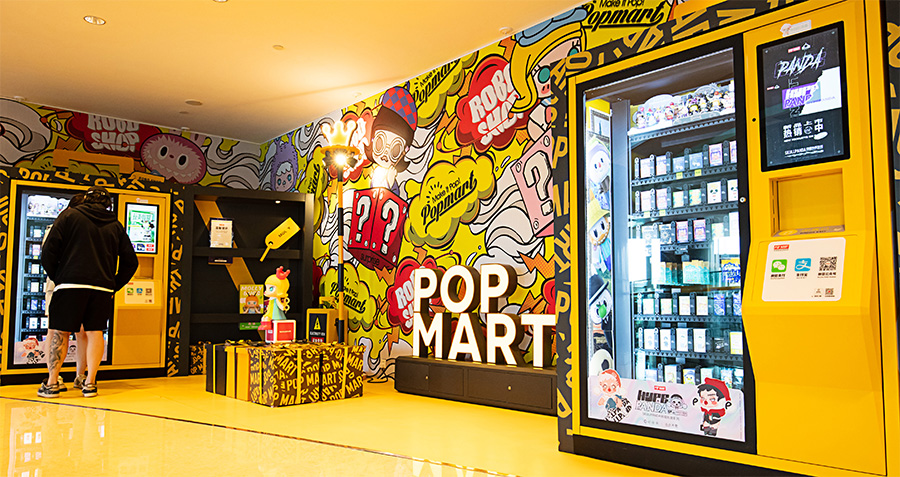China’s private sector, which primarily comprises micro-, small- and medium-sized enterprises (MSMEs), is the backbone of the Chinese economy. It contributes more than 50% of tax revenue, more than 60% of GDP, more than 70% of technological innovations, more than 80% of urban employment and more than 90% of market entities in China. MSMEs play a pivotal role in driving economic growth, but with conventional commercial banks in China tending to be risk-averse, MSMEs often face difficulties obtaining cheap financing due to a lack of credit and collateral.
In the past, MSMEs often relied heavily for credit on “core enterprises,” that is key players in the supply chain, which coordinate and drive the flow of goods, service and payments. Typically large-scale buyers and manufacturers, they have enormous power stemming from their ability to set payment terms and conditions for their suppliers.
To address the challenge of providing credit to MSMEs, MYbank, an Alibaba-backed digital bank in China, launched a finance system named the “Goose System.”
Money talks
MYbank was established by Ant Group in June 2015 and from the outset has positioned itself as a digital financing institution serving MSMEs and individuals with limited access to bank financing. MYbank operates without brick-and-mortar branches, instead aiming to be a technology-based online bank.
MSMEs often require quick and flexible access to low-interest loans. However, their sometimes limited collateral, sparse credit records and incomplete financial reports may make them less appealing to traditional lenders, even for relatively small loan amounts.
In its early days, MYbank mainly served e-commerce sellers on Taobao and Tmall. By leveraging transaction data accumulated on these e-commerce platforms, the company developed a unique big-data automated loan processing system that was referred to as “310,” since it granted loans within three minutes and disbursed them in one second with zero human intervention. Since 2017, MYbank has expanded its online lending to serving offline businesses using a QR code-based payment system, through which it has achieved solid cashflow and has served businesses in sectors including retail, catering, clothing, logistics, construction and manufacturing.
At present, MYbank has three major business units, providing finance services for MSMEs, rural communities and supply chains respectively. As of the end of 2022, MYbank had served more than 50 million small- and micro-level customers. For 80% of its clients, MYbank has been their first business loan provider.
Branching out
In 2016, Alibaba announced that it would be focusing on “new retail” and “new finance.” Backed by Alibaba’s affiliate firm Ant Financial, MYbank responded by launching “self-factoring” for Tmall brand owners, a service that allowed Tmall sellers to receive early payments for invoices that had yet to be paid. MYbank subsequently extended its services to offering loans to eligible distributors and companies operating within the Alibaba-supported supply chains of the Cainiao logistics and Freshippo retail services.
In 2018, MYbank made the move to operate beyond Alibaba’s e-commerce ecosystem. There were several reasons behind this decision. Firstly, MYbank has a mission to empower as many MSMEs as possible across society, by providing them with convenient and affordable financial services. Second, many core enterprises, or large corporations such as Mengniu (a dairy company) and Liby (a detergent manufacturer), reached out to MYbank to provide supply chain financial services for their downstream and upstream MSME partners.
Third, through its operation within the confines of Alibaba, MYbank accumulated large volumes of data, an understanding of risk management and experience in granting credit and offering interest rate concessions, all based on the dynamic needs of merchants. This knowledge and experience was available to extend to a broader set of customers beyond Alibaba.
The Goose System
MYbank recognized that the methods used by conventional banks to assess the risk of default were not appropriate for MSME borrowers and that it needed to find a new way to evaluate applications for credit. Therefore, MYbank developed an integrated digital supply chain finance solution, the “Goose System,” in collaboration with tech teams from Alibaba Cloud and DingTalk, an Alibaba communication platform.
The Goose System is essentially a digital transaction monitoring platform, centered on core enterprises but covering businesses along the entire supply chain.
Alibaba serves companies large and small, generating abundant data. With access to the data MYbank can assess how well these companies are performing. Thus, similar to how it analyzes QR code payments to assess small businesses, MYbank has access to a reliable information source to verify a borrower’s credit level when both parties to a transaction are using the Goose System. Based on the data acquired, MYbank offers a range of cloud debt products covering different stages of supply chain finance for businesses of varying sizes.
The Goose System requires no collateral and runs without human intervention. It can span the entire supply chain and now extends across China. Currently, more than 500 large brands, or core enterprises, including Haier (home appliances), Huawei (electronics), Mengniu (dairy) and Want Want (food and beverage), have adopted the system. MSMEs, and in particular those that are their distributors, now have an alternative basis for their “credit rating,” i.e., their transaction data with these core companies, making them eligible for credit loans. Thanks to the Goose System, MSMEs face a much lower barrier than they had previously confronted when accessing supply chain finance. Almost 80% of core enterprises’ downstream distributors and brick-and-mortar stores now have access to business loans. With its large data pool, the Goose System has been able to analyze combined transaction data across different supply chains that had previously been assumed to be irrelevant to one another and in doing so has been able to more clearly map out various markets and industries. The more data MYbank can acquire, the better its chances of creating a novel and successful method of risk management, something that cannot be matched by a traditional bank.
The approval rate of business loans for MSMEs through Goose is currently over 80%. It has particularly benefitted China’s under-developed regions, with nearly half the SMEs using MYbank’s procurement loan services being located in central and western China. The Goose System and its digital credit have also alleviated the need for core enterprises to vouch for their distributors, thereby minimizing their exposure to financial risk.
Take that to the bank
Mengniu provides an example of how MYbank can work in the real world. The Chinese dairy giant has almost 20,000 distributors in China, many of whom have previously experienced difficulty securing loans. As early as 2009, Mengniu started trying to address this, but loans were only provided to the largest distributors — those with sales exceeding ¥10 million ($1.5 million) — leaving the remaining 70% of distributors without access to credit.
In 2018, MYbank began providing exclusive procurement loan services to Mengniu’s downstream small- and medium-sized distributors. Since partnering with MYbank, the approval rate of business loans for these distributors has risen to 80%, 58% of them coming from the under-developed central and western regions of China. According to Mengniu’s supply chain financing platform, distributors using MYbank’s digital financial services in 2020 saw a 22% YoY growth in sales volume, compared with only 10% for those who did not use MYbank.
As well as offering loans to distributors, MYbank’s Goose System also addresses the difficulties of fund management through its “cloud fund” offering. MYbank provides firms with a complete set of online payment and fund management tools, including cash registers, account distribution, purchase payment collection and so on. Having these various functions under one single system simplifies account reconciliation, reduces costs, ensures compliance and ultimately improves efficiency of enterprise fund management.
In 2021, Happy Sweet Potato, a Chinese tea chain with nearly 2,000 franchise stores nationwide, combined its business and funds management systems using MYbank’s Goose System. The system has allowed Happy Sweet Potato to accurately identify the source of payments in its offline stores and to automatically record accounts in the system, thereby enabling headquarters to immediately dispatch goods as soon as a franchise store has paid for them. Financial efficiency has increased by 30% compared with the earlier set-up, in which accounts were cross-checked across multiple systems.
Cash strapped
MYBank has, however, faced challenges with the Goose System.
Challenge 1: Understanding the subtleties of different businesses
To date, MYbank has served 500 core enterprises in nearly 20 industries. It takes time to build up an understanding of each industry, its underlying structure and any idiosyncrasies. Similarly, there may be regional differences, local policies and seasonal changes to be taken into account. MYbank needs to be sufficiently flexible to be able to adapt to these different situations, rather than taking a “one size fits all” approach.
Challenge 2: Obstacles associated with core enterprise customers
Another set of major challenges for MYbank is the technological barriers that eventuate from core enterprises that are not yet digitally advanced. While MYbank has been in contact with more than 1,000 core enterprises, over 80% of them lack the required digital capacity to access the Goose System. Of concern, many appear to be lacking the motivation to digitalize, since doing so will require a high level of upfront investment, with the benefits not immediately apparent.
If core enterprises are not digitalized, the quality data required for accurate risk assessment will not be available to MYbank, stymieing the opportunity for loan issuance. To overcome these barriers, MYbank is working closely with Ant Financial to try to encourage core enterprises to reach an adequate level of digitalization.
Another issue is that some core enterprises have requested commissions from the finance that MYbank has provided to their suppliers and distributors. MYbank has been reluctant to enter into these kinds of transactions, since it will inevitably involve transferring the cost burden onto the small- and micro-sized enterprises, increasing the financial pressure on them at a time when regulatory departments have been encouraging financial institutions to provide credit to MSMEs at lower interest rates.
Challenge 3: Promoting MYbank
While the model may be highly functional, MYbank has been lacking a dedicated sales force to promote its services. By contrast, most of MYbank’s conventional commercial bank competitors have a large network of branches, numerous client managers and an established presence in the industry.
Ever since it was established, MYbank has acknowledged that it would not compete head-on with traditional financial institutions. Instead, MYbank has set out to collaborate with these banks, to share and co-develop the market, offering them improved operational efficiency through MYbank technology.
Conventional banks certainly have the advantage when it comes to managing people, while the digital-driven MYbank excels at processing data. Any cooperation between the two is win-win: banks are able to make more deals and MYbank earns a commission fee for each loan.
A bank you can bank on
The COVID-19 pandemic accelerated demand for contactless financial services, providing a clear advantage to online banks. Data and information have been key to the development of finance for those smaller supply chain enterprises that were not being well served by the traditional financial institutions. However, there are considerable risks in data acquisition and use. MYbank will need to ensure that data security is tight, in order to minimize the risks to its business operations and to ensure compliance with regulatory authorities.
The MYbank 2022 Sustainability Report clearly outlines its positioning, as “an explorer of internet banking and a practitioner of inclusive finance.” MYbank has worked to solve the problems associated with microfinance through the use of technology, assisting MSMEs by providing efficient and convenient financial services. Further, it has taken an open and cooperative partnership approach in its dealings with traditional banks, local governments, tax bureaus and financing guarantee companies.
Rather than focusing solely on economic returns, MYbank has prioritized the social value generated through its businesses. MYbank needs to continue to ensure that it takes the necessary safeguards to minimize the various market, credit and operational risks it faces, while improving profitability and ensuring healthy development in the long run through championing innovative approaches to fintech.
By Song Zhongzhi, Associate Professor of Finance, Shanghai Jiao Tong University; Li Mengjun, Senior Researcher, Case Center, Cheung Kong Graduate School of Business




















